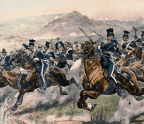


July 30, 1955, marked the 10th anniversary of the worst disaster in American naval history—the sinking of USS Indianapolis. That Saturday retired salesman and World War II Navy veteran Clair Young was at home in southern California reading a day-old Los Angeles Times article that related how men in the heavy cruiser’s Radio Room 2 knew an SOS message had gone out following the vessel’s torpedoing by a Japanese submarine, but they believed no one had received it. A week later, on Aug. 6, 1955, a piece in the Saturday Evening Post stated unequivocally no SOS had been received.
Young knew better. On that fateful night a decade earlier he’d been a young radioman assigned to the sprawling U.S. Navy facilities at Tacloban, on the Philippine island of Leyte. He had personally delivered a copy of the cruiser’s SOS message to his commanding officer. What happened in the hours, days and years that followed is a story of unimaginable fear, tragedy and betrayal—yet it is also one of redemption.
saw extensive combat in several World War II campaigns, including providing naval gunfire support for the landings on Tarawa, the Marshall Islands, Saipan, Iwo Jima and Okinawa. Damaged by a Japanese bomb during the latter operation, the cruiser underwent repairs in California. On completion of the work was tasked with a secret mission of paramount importance. On July 26, 1945, the warship delivered key components of , the atomic bomb that would be dropped on Hiroshima, to Tinian, in the Northern Mariana Islands. The nature of sailed to Guam and then got underway for the Philippines.




